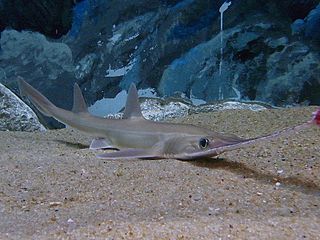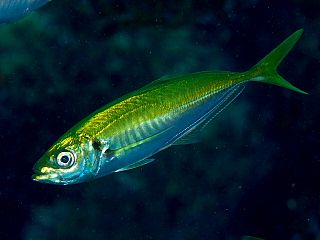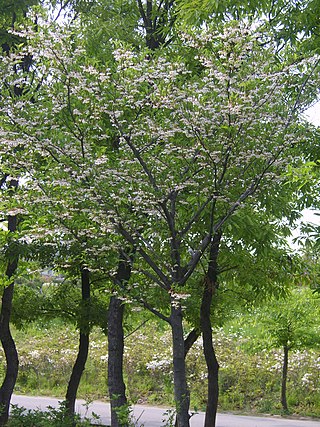
Entomology is the scientific study of insects, a branch of zoology. In the past the term "insect" was less specific, and historically the definition of entomology would also include the study of animals in other arthropod groups, such as arachnids, myriapods, and crustaceans. This wider meaning may still be encountered in informal use.

Christian Gottfried Ehrenberg was a German naturalist, zoologist, comparative anatomist, geologist, and microscopist. Ehrenberg was an evangelist and was considered to be one of the most famous and productive scientists of his time.

Phymatopus is a genus of moths of the family Hepialidae, which consists of around 500 species and 30 genera. The genus was erected by Hans Daniel Johan Wallengren in 1869. They can be found across Eurasia and North America. Species can be distinguished by the different morphology of male genitalia and different forewing patterns, which vary in stripe colour and size and arrangement of spots. The stripes themselves consist of spots separated by dark veins which are fringed by thin black lines from both inner and outer sides.

The warbling white-eye, also known as the Japanese white-eye and mountain white-eye, is a small passerine bird in the white-eye family. The specific epithet is occasionally written japonica, but this is incorrect due to the gender of the genus. Its native range includes much of East Asia, including the Russian Far East, Japan, Indonesia, Korea, and the Philippines. It has been intentionally introduced to other parts of the world as a pet and as pest control, with mixed results. As one of the native species of the Japanese islands, it has been depicted in Japanese art on numerous occasions, and historically was kept as a cage bird.

The Japanese giant salamander is a species of fully aquatic giant salamander endemic to Japan. With a length of up to 5 feet (1.5 m), it is the third-largest salamander in the world, only being surpassed by the very similar and closely related Chinese giant salamander and the South China giant salamander.

The Japanese sawshark is a species of sawshark in the family Pristiophoridae. This shark has a long, narrow rostrum. Its first dorsal fin originates behind the tips of the pectoral fins, and its caudal fin is angled almost straight in line with the body. The Japanese sawshark reaches a maximum length of up to 1.36 m.

The brown marmorated stink bug is an insect in the family Pentatomidae, native to China, Japan, Korea and other Asian regions. In September 1998 it was collected in Allentown, Pennsylvania, where it is believed to have been accidentally introduced. The nymphs and adults of the brown marmorated stink bug feed on over 100 species of plants, including many agricultural crops, and by 2010–11 had become a season-long pest in orchards in the Eastern United States. In 2010, in the Mid-Atlantic United States, $37 million in apple crops were lost, and some stone fruit growers lost more than 90% of their crops. Since the 2010s, the bug has spread to Georgia and Turkey and caused extensive damage to hazelnut production. It is now established in many parts of North America, and has recently become established in Europe and South America.

John Henry Leech was an English entomologist who specialised in Lepidoptera and Coleoptera.

Sports Associations in East Germany were nation-wide sports agencies for certain economic branches of the whole society, which were members of the Deutscher Turn- und Sportbund (DTSB) Members of biggest social employers had their own branch sports clubs or the Sportvereinigung.

Tessaratomidae is a family of true bugs. It contains about 240 species of large bugs divided into 3 subfamilies and 56 genera.

The Japanese jack mackerel, also known as the Japanese horse mackerel or Japanese scad, is a species named after its resemblance to mackerel but which is in the family Carangidae, the jacks, pompanos, trevallies and scads. Their maximum reported length is 50 cm (20 in) with a common length of 35 cm (14 in). They have a maximum reported weight of 0.66 kg (1.5 lb) and a maximum reported age of 12 years. They are found around the coast of Japan, apart from Okinawa Island, usually on sandy bottoms of 50–275 m (164–902 ft) deep. They feed mainly on small crustaceans such as copepods, and shrimps and small fish. They are similar to the yellowtail horse mackerel around New Zealand and Australia, apart from having more gill rakers and larger eyes.

Trissolcus japonicus, the samurai wasp, is a parasitoid wasp species in the family Scelionidae, native to east Asia but now found in Europe, North America, and Chile. It is chiefly known for parasitizing Halyomorpha halys. It deposits eggs into the eggs of the stink bug, and as the wasp larvae develop, they kill the stink bug eggs. A single adult wasp emerges from each stink bug egg.
Panagaeus robustus is a species of ground beetle in the Panagaeinae subfamily that can be found in Japan and Maritime province of Russia. In Japan, the species was found in Ezo, Junsai, Sapporo, and Shiraoi provinces.

Harpalus latus is a ground beetle in the subfamily Harpalinae that can be found in Europe, Armenia, Georgia, Kazakhstan, Mongolia, and North Korea. Found in Ontario Canada

Polistes japonicus is a eusocial paper wasp found in Japan. It was first described by Henri Louis Frédéric de Saussure in 1858. It is closely related to Polistes formosanus. This species lives in small colonies with few workers and a foundress queen. Nests of these wasps are sometimes used as a traditional medicine in Korea, China, and Japan.

Aedes japonicus, commonly known as the Asian bush mosquito or the Asian rock pool mosquito, was first described by Theobald in 1901 from Tokyo, Japan and has four known subspecies Ae. j. japonicus, Ae. j. shintienensis, Ae. j. yaeyamensis, and Ae. j. amamiensus. They are competent arbovirus vectors known to transmit the West Nile virus as well as Japanese and St. Louis encephalitis. They are listed as an invasive species by the Global Invasive Species Database.

Adolph Schenck was a German entomologist and teacher.

Styrax japonicus, also known as the Japanese snowbell, is a species of flowering plant in the family Styracaceae, native to Korea, Japan, and Southern China. Growing to 12 m (39 ft) tall by 8 m (26 ft) broad, it is a graceful, spreading deciduous tree with oval, upward-facing leaves which occasionally turn yellow or orange before falling in autumn. Masses of slightly fragrant, bell-shaped white flowers hang from the branches in summer, followed by fruits (drupes) which resemble olives in both shape and colour.

Orestes guangxiensis is a representative of the genus Orestes.

Orestes japonicus, a stick insect, is a representative of the genus Orestes.

















